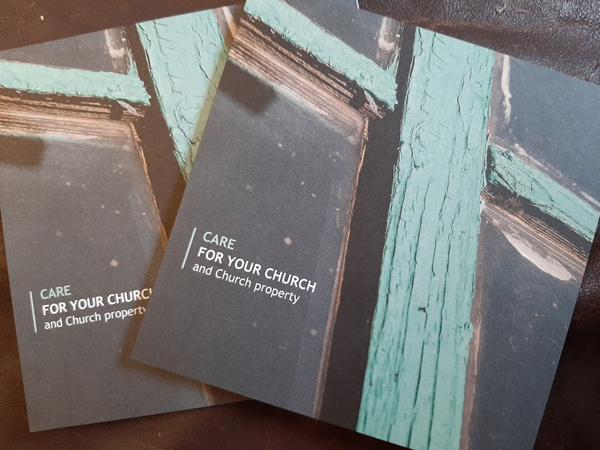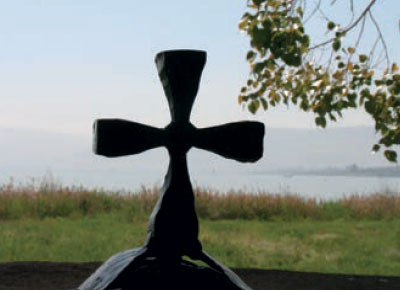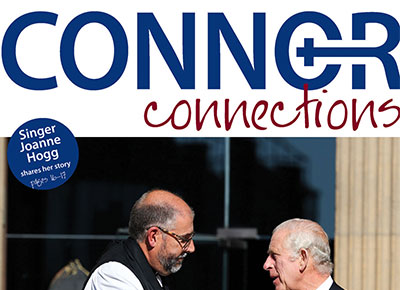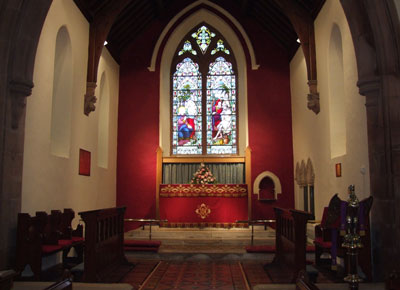New guide to help care for churches

Maintaining old, and in some cases ancient buildings, has long been a key role of select vestries.
But many of those who serve on vestries do not have the benefit of a construction or architectural background, and the challenges posed by keeping church property in good condition can be daunting.
Recognising this, the Northern Ireland branch of the Institute of Historic Building Conservation (IHBC) has launched a user-friendly booklet, available both in print and online, to highlight common problems and how they can be overcome. A collaboration with the Church of Ireland has resulted in a branded version for the use of select vestries.
The booklet, Care for your Church and Church Property, has also been endorsed as practice guidance by the AACO – the Republic of Ireland’s Association of Architectural Conservation Officers, Cumann Oifigigh Chaomhnúcháin Ailtireachta.
AUTHORS

Des Cairns, a parishioner at Lisburn Cathedral, is one of the guide’s authors.
Its authors are Des Cairns, a member of Lisburn Cathedral, Diocese of Connor, and conservation architect Jill Kerry, who is also involved with the Ulster Historic Churches Trust.
Des, who is IHBC NI Branch Chair, has an architectural practice and carries conservation accreditation. He is on the Connor Diocese Glebes and Architectural Committee and has been a member of three select vestries.
Des said: “As a committee, we are delighted to have worked on and seen the publication come to fruition. We had become aware at the need for an accessible and concise booklet tailored for churches, where committee members would have a starting point checklist.”
He said that a newly-elected glebe warden’s first question was often; ‘What do I need to do?’
“The booklet contains lots of information presented in a format that is easily accessible to someone who is new to a committee looking after a building,” he said.
BRANDED
The book is suitable for churches of all denominations on the island of Ireland, and has been welcomed by the Representative Church Body (RCB) which has financed its own Church of Ireland branded version.
It offers helpful advice on the maintenance of roofs, walls, gutters and downpipes and windows and doors.
“Walls in buildings dating from pre-1919 are generally built with lime products. If they get wet, they will dry naturally, but if cement based products are applied to the wall, this prevents the wall from drying, the damp can remain in the wall and a freeze and thaw cycle can result in serious damage to the building fabric,” Des explained.
“Some of the biggest issues arise because of lack of cleaning gutters or fixing broken slates. Rainwater runs down the wall or goes into the wall, saturating rafters which will then begin to rot without anybody noticing.”
Des said that in one case, a leaking gutter had resulted in four roof trusses having to be repaired, costing a parish £20,000. “If the gutter had been maintained, it would have only cost a few hundred pounds,” he said.
AWARENESS
“This booklet will raise awareness of what select vestries need to look out for. Standing for select vestry can seem like a bit of a step into the unknown, and this will help.”
Des advises that any parish considering major work on a church building should first seek advice (in addition to advising the diocese and RCB) from either a Chartered Architect, Chartered Architectural Technologist or Chartered Building Surveyor with full conservation accreditation.
Pauline High, Property Manager with the RCB, said: “In the Church of Ireland we have a significant resource in our buildings and yet the upkeep of these buildings can be the cause of some of our greatest frustrations.
“The Property Department of the RB welcomes the publication of this booklet and is happy to support it. We would commend it to all our parishes and encourage them to pay regular attention to the maintenance needs of their buildings.”
A copy is available for download on the parish resources section of the Church of Ireland website. Printed copies of the leaflet are available from the RCB Property Department, property@rcbdub.org.
This article first appeared in The Church of Ireland Gazette, October 2020 issue.
© Copyright The Church of Ireland Diocese of Connor 2025 | Web Design by LD2.digital




